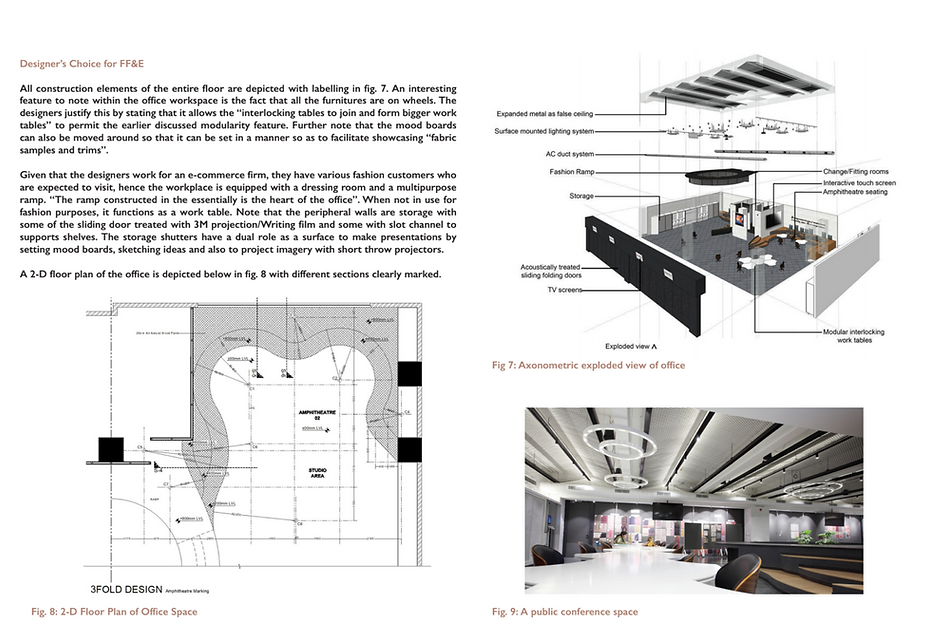Indoor Air Quality
Indoor air quality is a major concern for an office space for Information Technology desk job workers located in Bangalore. A study conducted for three non-residential urban buildings in India found that a significant amount of concentrated air pollutants such as “PM2.5, CO2 and VOC” were recorded indoors1. Given the impact of air inside space on not only the comfort and health of each individual in that space but also his/her productivity, the quality of indoor air is an important design decision to consider.
Sources that contribute to the pollutants in an indoor environment can be from either outdoors or indoors. From the perspective of office space, this can be further classified into biological, chemical, or particulate pollutants2. To give an idea of the office
Fig.1 3-D floor plans of the first and ground floors of the proposed office space.
Referring to Fig.1, there is the possibility of biological pollutants in high humidity areas within the space like the toilet, pantry water spill zones, or even if the humidity in any of the rooms is not controlled properly. This can give rise to fungi, mold, and allergens that can trigger responses in allergic individuals3. Given that overall, the activity level within such an office space ranges from sedentary to medium level, the humidity and carbon dioxide levels can also be expected to be in this range. Furthermore, there is a possibility for chemical pollutants such as tobacco smoke infiltrating from outdoors or even chemical odor emitted from the furniture and coverings on walls, ceilings, and floors or even from cleaning agents used by janitorial services4. Lastly, there is a possibility for particles such as dust, mud, or any form of dirt brought into space by individuals and infiltration from the outdoor environment through the entrance.
Looking at the same precedent study of “Myntra Thinktank”, the AC duct system brings efficient airflow in the space. Furthermore, it needs to be ensured that furniture and equipment are not entirely blocking air and ventilation ducts or grilles.
Several strategies can be used to adequately control the indoor air quality in the space through effective design considerations. The city of Bangalore has very favorable weather throughout the year. The wind path directly courses the side of the building, where the windows are mostly located. An enhanced cross-ventilation system will help maintain indoor air quality and illustrated in Fig. 2.
Fig. 2 Cross Ventilation System considered in the office space.
From precedent studies of a similar office spaces, it was also found that the use of the strategy of integrating plants at various locations in the space to act as carbon-di-oxide sinks and improve indoor air quality. This is integrated in the office as illustrated as green areas in the finish plan in fig. 3
Fig. 3 Green areas along the edges of the floor acting as carbon sinks to improve air quality in the office space.
Another strategy that can be implemented is effective space planning. This can be implemented by thoughtfully placing furniture without impacting the delivery of air into an occupied space. Given that the office space is dedicated to IT workers, computers that dissipate a lot of heat should not be kept right under the thermostat sensor as this would cause the air conditioning system to deliver excess cool air into space. In order to complement the space planning, the ductwork about the ceiling needs to be effectively designed. This should be such that the air diffusers are located in a manner that allows comfortable ventilation in the space.









